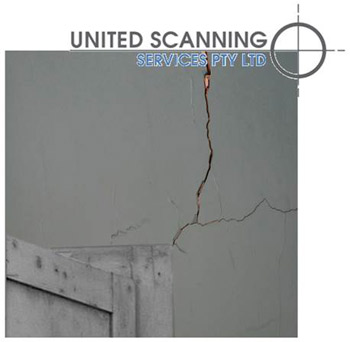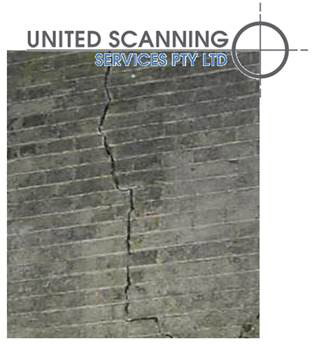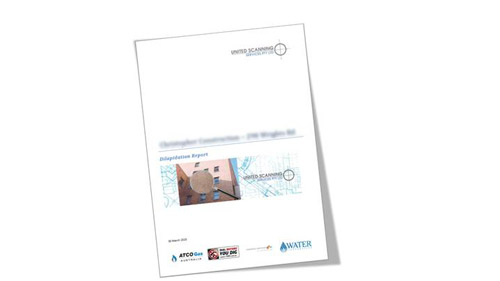Dilapidation Reporting: More than surface deep

Figure 1: United Scanning provides comprehensive dilapidation reporting
United Scanning has been providing technical services to companies working in the civil construction, mining and resource, and government sectors in Western Australia for some time. United Scanning possesses special expertise in the areas of underground service locating and concrete inspection. We use a variety of state of the art technologies to provide our clients with the insights into the state of their project site or structure that they require.
Having working on hundreds, if not thousands, of construction sites, the United Scanning team are very familiar with the heavy machinery and large transformations and excavations that are often necessary to meet the requirements of a particular project. We are also very aware of the impact the use of these heavy machines to perform large earthworks can have on those structures surrounding the project site. We have seen firsthand the damage the can be inadvertently caused by poorly managed and planned works or projects where insufficient priority has been placed on the surrounding and pre-existing structures.

Figure 2: Proving the origin of cracking can rely on a benchmark dilapidation report
Performing a dilapidation report prior to commencement of the construction work is one of the best ways for companies to protect themselves from future litigation. Publication of the dilapidation report is also an excellent way to raise awareness internally of the sensitivity of the surrounding structures to nearby construction. Companies that are very aware of the context in which the construction work is being conducted, as documented in a dilapidation report, will lower their risk of causing damage to that context and their risk of suffering from the associated litigation.

Figure 3: Sometimes pre-existing damage is only noticed after major works
A dilapidation report is a detailed assessment of the pre-condition of all structures within the construction zone and also structures nearby to it. It documents the internal and external condition of these structures with particular emphasis on any pre-existing cracks, distortion, settling of the structure, subsidence, leakage or other signs of age and damage. The report should capture the condition of the entire structure and its neighbours and should include:
- Walls and roofs (both interiors and exteriors)
- Floor and slab condition
- Service pits and subsurface infrastructure – cables, lines, pipes and other underground features
- Roof gutters and down piping
- Footpaths and road surfaces
- Fixtures within the structures
It should also capture more decorative features like:
- Cornices and ceilings
- Tiling
- Road and pavement edging
Any pre-existing damage is carefully recorded along with detailed photographs, notes and other measurements along with photographic evidence of areas where no dilapidation or damage is noted.
While a dilapidation assessment can be conducted at any time during the project, if conducted prior to the commencements of work and completed comprehensively, the dilapidation report will serve as a formal record of the condition of the site and its neighbours prior to the beginning of the work. It can then serve to resolve any potential disputes between the construction company and any other parties who may claim that the work has cause damage.
A formal dilapidation report that benchmarks the condition of the structures prior to the work can be compared with any evidence produced that describes alleged new damage and serve to prove, hopefully, that the damage was pre-existing and not caused by the construction work. Should it be proved that damage has been caused by the construction work, a dilapidation report can minimise the size of the claim by proving the extent of the damage rather than allowing a more open ended claim to be made by the claimant.
United Scanning bring special expertise to the dilapidation assessments and are able to provide a dilapidation report that documents details that other companies cannot. United Scanning are able to bring their deep expertise in subsurface service locating and concrete scanning to bear.

Figure 4: A United Scanning Dilapidation Assessment Report
United Scanning use state of the art Ground Penetrating Radar scanners to inspect the structures being reported on. Using this technology, United Scanning can provide an extra level of detail to dilapidation reports around pre-existing damage that will further assist with minimising any claims.
Any cracks or other physical defects are carefully examined. Where other providers are only able to take photos of the external presentation of the cracking, United Scanning can complement the photographic record with imagery from within the concrete that details factors like the depth, extent and width of the crack.
United Scanning can also go beyond an inspection of underground services and subsurface features that ends at the service pits. Using Ground Penetrating Radar and EM Detection they can trace all the services, cables, pipes and other sub-surface features and mark their locations both on the ground on site and on a detailed plan within the dilapidation report. This provides our client with the information to both better avoid damage to neighbouring services and also prove that service failure or damage was not cause by the works due to their careful avoidance of these locations as documented.
Hire United Scanning today and get a Dilapidation Report that is more than just surface deep.
